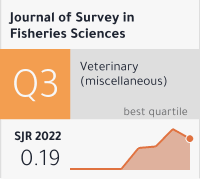Bioenergy Of Technogeneously Polluted Soils In Azerbaijan
DOI:
https://doi.org/10.53555/sfs.v10i2.1176Keywords:
invertebrates, energy, abundance, biomass, pollutionAbstract
The reliability of the functioning of biogeocenoses depends on the vigorous activity of soil organisms that carry
out the destruction and reutilization of organomineral and technogenic components of various etiologies
entering the soil. Therefore, the study of the bioenergetic characteristics of invertebrates of technogenically
polluted gray-brown and gray-brown (chestnut) soils is of certain scientific importance. The studies were
carried out on uncontaminated natural cenoses of gray-brown and gray-brown (chestnut) soils, as well as in
technogenically polluted biotopes. The conducted studies on uncontaminated gray-brown soils showed that the
total amount of energy accumulated in the mesofauna biomass is 2555.71 cal/m2. The main carriers of energy
are: Lumbricidae; Isopoda, Insecta. In the biotopes of cement and gypsum factories polluted with waste, the
biomass energy is 1372.67 cal/m2 and 3592.70 cal/m2, respectively (an increase in biomass energy is noted due
to calcophilic species). The energy accumulated in the biomass of the mesofauna in the biotopes polluted with
the wastes of the superphosphate and the organochlorine synthesis factories varies between 1694.69 cal/m2 and
15873.47 cal/m2 (an increase in energy is noted due to gastropods - Gastropodae). In uncontaminated graybrown (chestnut) soil, the energy accumulated in the mesofauna biomass is 11392.40 cal/m2. The main carriers
of energy are: Lumbricidae; Isopoda; Insecta; Gastropoda. In biotopes polluted with aluminum plant waste, the
mesofauna biomass energy decreases to 9142.01 cal/m2. In this case, the main energy accumulators are insects
- Insecta (Tenebrionidae and Scarabaeidae).









